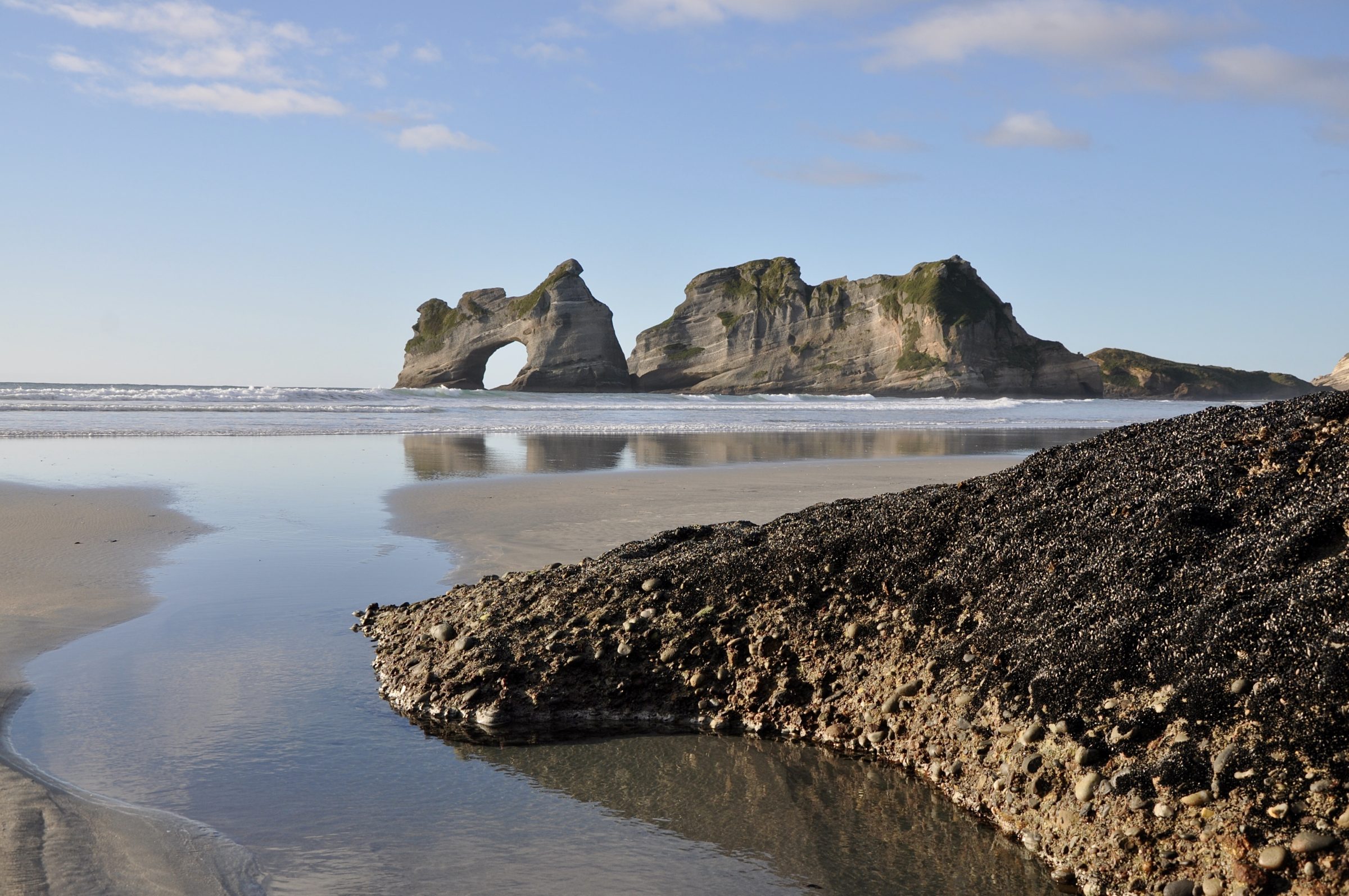Only a modest number of human feet have walked its actual sands, but every day of our so-called “21st” century many millions of human eyes see this singular beach, virtually.
An image of it is the “screensaver” viewed countless times by subscribers to Microsoft’s Windows 10 operating system.
Doubtless, most of those subscribers have no idea of what and where is this “iconic” beach.
Wharariki Beach is adjacent to Cape Farewell – the northernmost point of New Zealand’s South Island.
Here, one is well north of Wellington and the North Island’s southernmost point, but further south than anywhere on the Australian continent.
Wharariki Beach sits on almost the same latitude as the southern tip of Bass Strait’s Flinders Island.
The beach’s Māori name (pron: FAR-ah-REE-kee) refers to a spectacular New Zealand native plant.
Phormium cookianum, aka Phormium colensoi, is commonly but misleadingly called “mountain flax”; see/discover more about it here)
Wharariki grows in a great many places, but Wharariki Beach is a one-off.
Its remote location ensures that it is usually an uncrowded place, but for any able-bodied person it is easily reached; a conventional 2WD will get you almost there.
Then, a pleasantly undulating walk of circa 30 minutes, will put your feet upon one of the world’s loveliest shorelines.
Check tide times; you definitely should try to be there when the tide is low, and the still-wet sands mirror-image the Archway Islands…and whatever clouds happen along.
Wharariki Beach is also a prime spot for seal-watching.
Click this to see and discover much more.
(the featured image is copyright Doug Spencer, not Bill Gates. I took the photo at 3.56 pm on 10 July 2010)
